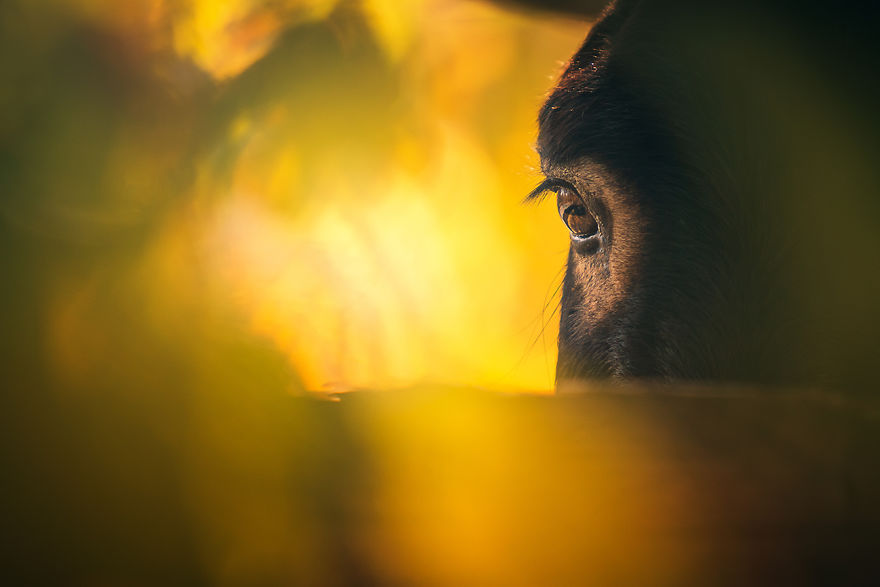
I have three kids and they are all so different, one is quite shy, one is super confident and the third never stops talking – they have all been raised the same so I often wonder about 'nature or nurture'.
I was recently in the Faroe Islands and had planned to make a video on the rules of photography but ended up discussing the nature vs. nurture argument for photography, which actually produced a more compelling result.
Evening rays on one of the many amazing fjords in the Faroe Islands.
Ever since I can remember, I have been fascinated by photos and rich visual communication. At school I had difficulties with English, reading and writing and it was only when I was in my twenties that I found out I was dyslexic. Although reading was a struggle, I loved to look at photo books and would spend hours studying them, pondering over the photos, and trying to work out why they looked so good.
I took up photography at the age of 13 and found it to be a great way to express myself – I was much more comfortable producing a photograph that told a story, rather than the written word. Even though I enjoyed being creative through photography, I didn’t have a natural talent for it and my early results left a lot to be desired!
Jump forward over 30 years and I now consider myself to be a competent landscape photographer. Practice doesn’t make perfect, and there is always something new to learn; but I feel that I can usually find a good composition when I go out shooting; and I now have a portfolio of photographs of which I am proud and which people are willing to buy so that they too can enjoy the images.
Spring - Printed on Fotospeed NST bright white paper.
So if I didn’t have a natural talent for photography, have I managed to nurture what little artistic talent I did have to make myself into a better photographer?
Ansel Adams once said, “There are no rules for good photographs. There are just good photographs. "
Although I agree with the sentiment behind this quote, I have actually spent the last few years building my YouTube channel and trying to explain to people what makes a good photo and how they can improve their photography. There are certain rules, or maybe best to call them guidelines, that apply to landscape photography that usually help us to achieve better results.
Ansel Adams once said, “There are no rules for good photographs. There are just good photographs”.
Photography isn’t quite like the art of drawing a cartoon or painting a picture. It is a combination of technical knowhow and artistic interpretation. If you just have one part of the puzzle, you aren’t likely to get the best results. Don’t get me wrong, give an accomplished artist a camera phone and they would likely produce something superior to a less artistic person. But a non-artist can also produce a great photo.
My wife, Ann is a prime example – she can’t even draw a straight line but she is actually great at finding unique and interesting compositions for photographs (probably a result of spending hours out on location with me and listening to me rambling on about composition and getting excited about great light).
When it comes down to it, there are four elements that you need to master in photography and these are subject, light, composition and timing which are discussed in my video on the four elements of landscape photography. It is really only the composition element that is the artistic one – how you go about placing all the elements in the scene in the most pleasing way; or perhaps more importantly, what do you leave out?
Passing Storm, Faroe Islands.
So, can you learn this? Is there a set of rules for you to follow to improve your composition? Is there a limit to how good you can get by learning such rules and can you become more artistic?
Take this image for example – can you say what makes it a good photo or what can be improved?
Essence of the Faroes.
Try it with a friend. Critically consider ten photos that aren’t yours and explain to each other why they are good or bad, what you like and what you think could be improved – you’ll be surprised how useful an exercise this is.
In this video I consider a number of photographs and explain why I think one of the keys to becoming a great photographer is to study accomplished images and try to work out what makes them so good.
The first shot I took: great composition, great subject, but poor light and poor timing.
Ten minutes later: great composition, great subject, great light, great timing.
Even if you have all the elements in the same place, you also need to have patience (a quality that I wasn’t born with, but which I have learned to master) in order to wait for the best conditions and get the timing right. Light can make an enormous difference to a shot. Take a look at the two images above. The only difference is time. The light has changed significantly and the photographer moved, but it was just a case of waiting for the right moment.
I explore 'nature or nurture' a bit more in the video below, where I also discuss light and simplicity in more detail. What are your thoughts on nature vs. nurture? Let me know in the comments!
2019-5-26 17:00




